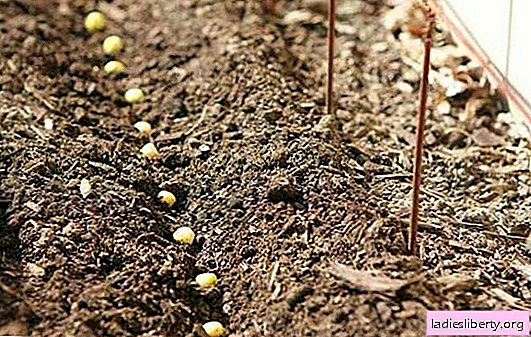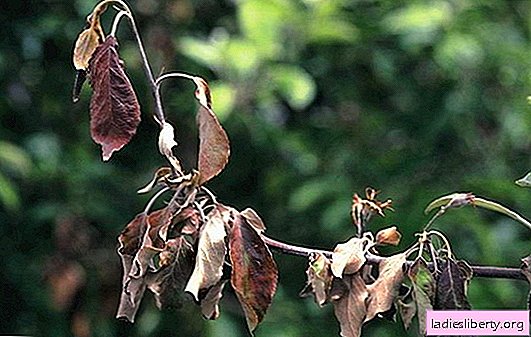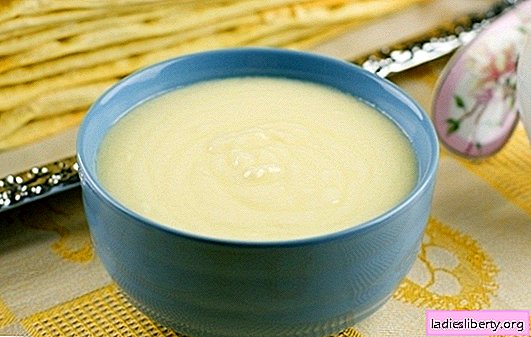
Pea is an annual, very fast-growing plant. Now 3 types of peas are grown - fodder varieties, cereals and vegetables.
Peas are a source of vegetable protein, and at the same time a wonderful siderat.
The root system of this culture penetrates to great depths, the stem is branched, hollow, grows (depending on the variety) up to 2.5 meters. Petioles of complex leaves, ending with a tenacious antennae.
The first flowers of peas appear 30-35 days after sowing, the first peduncle is formed from the sinuses of 6-8 leaves, in late-ripening varieties - 12-24 leaves. The following inflorescences appear every 1-2 days, in beans you can find 4-10 seeds. Like other legumes, peas have special microorganisms on their roots that absorb air nitrogen and enrich the soil.
Pea varieties: how to choose
Subspecies of peas may differ in leaves, the color of inflorescences, the shape of the fruit. In practice, pea varieties are mainly subdivided according to ripening dates and according to purpose:
• Sugar. With small, wrinkled seeds, there is no parchment layer in the pods of these varieties;
• Brain. Peas after full ripening are highly wrinkled, they are mainly used in the phase of technical ripeness. Use for canning or freeze, as they contain a lot of sugar;
• Shelling. Beans are formed with smooth seeds, in which there are few sugars and a lot of starch.
When peas are planted: timing
Growing peas in a personal plot is quite simple when following the rules of agricultural technology. Planting of seeds is carried out at the end of April - approximately in the twentieth numbers, after the beds are slightly dry from spring moisture. Shoots appear quickly, even with small frosts. Sowing peas can be done several times a season - from the last decade of April every 10 days until the beginning of June.
The seeds are heated before sowing the soil in a solution of boric acid heated to 40 degrees (concentration of 2 g of acid per bucket of water), this will help reduce the risk of plant damage by pests and delay the spread of diseases. When the seeds swell in an acid solution, they need to be dried a little. If you couldn’t soak the seeds in advance, then you can sow them dry - they swell very quickly right in the moist soil.

Soil preparation
Peas will grow well in sunlit beds, with a low level of groundwater. It is better if the soil on the beds is fertile and light, acidity of 6-7 Ph, in poor soil plants develop poorly. Peas grow slowly on poor soil, and in areas with a high content of readily available nitrogen. Experienced gardeners advise planting peas around young apple trees, their small crowns do not obscure the pea bushes, and he feeds the trees with nitrogen. With this landing, it is advisable to pour fertile soil around the trunks with a layer of 10-12 cm.
Although pea sowing begins in early spring, it is better to prepare the beds for it in the fall - dig deeply, scattering 50 g of superphosphate and 20 g of potassium salt on 1 m2. With an acid reaction of the soil, it is normalized, introducing 300 g of wood ash per 1 m2. After melting snow contribute 1 m? beds of 10 g of saltpeter. Fresh manure cannot be used - the plant does not tolerate this fertilizer, but peas develop well on the beds that fed manure for the previous crop.
Before sowing, on the beds, prepare grooves of 5-7 cm deep every 15-20 cm. In the rows you need to add a mixture of compost with ash, which is sprinkled with soil with a layer of 2-3 cm thick. 15-17 beans per 1 meter are sown in the furrows, that is, it is necessary to arrange the seeds with an interval of 6 cm. Rows after sowing are covered with soil, and squeezed a little to protect the crops from birds, and reduce moisture evaporation. Before the first seedlings, depending on the preparation of 3-10 days. You can sow salad or radish in the aisles.
Pea crop care
The main work to care for this crop is timely watering with weeding and loosening of the soil. The first time you need to loosen the beds, 2 weeks after the emergence of seedlings, at the same time carry out the hilling of plants. After the plants rise by 20-25 cm, supports are installed along the rows in the bed. To increase the yield, it is necessary to pincer the top of the shoot early, which will provoke the formation of side lashes, which can also be pinched when they grow back. It is better to perform this operation early in the morning, on a sunny day, so that during the day the injured place could dry out.
Peas do not withstand the heat, for this reason during drought, beds often need to be watered. Watering the bushes after the flowers form is especially important. If the plants were previously watered about once a week, then when the peas bloom and the beans begin to pour on it, it is necessary to water at least twice a week. Watering abundantly - spending on 1 m2 of 9-10 liters of water.
Pea bushes can be fed simultaneously with watering, 20 g of nitroammophoski are dissolved in a bucket of water - is this the amount of solution that is evenly distributed over 1 m? beds. In addition to nitroammophoski, peas are fed with a solution of cow manure. Humus, compost, phosphoric and potassium fertilizers, are introduced before the flowering of plants, and even so fertilize, immediately after the formation of beans.

Peas have brittle and weak lashes, for this reason, they need to be tied up at the same time as the fruit starts to be loaded, if this moment is missed, then the plants will begin to lie on the ground under the weight of the crop. For support, reinforcement rods, or wooden pegs, are suitable, they are placed along the row after 1.5 meters. Between them horizontally, pull the twine or wire. Help a little peas, directing his whips with antennae on the installed supports, so that they are well ventilated and warmed up under sunlight.
Pea harvest
When it takes about a month after the appearance of the flowers, you can collect the first pods of peas. The formation of a new crop lasts 35-40 days, peas can be cut off every 1-2 days. The first to ripen the lower beans, in a good year, from one m2 you can collect up to 4 kg of beans.
Gardeners in their beds plant mainly peeling and sugar varieties of peas. Shelling varieties can be harvested from the last decade of June to September as the beans ripen - since this pea is mainly harvested in the form of green peas, the beans are picked early, at this time they are uniformly colored and smooth in the pods. If a mesh pattern appears on the surface of the bean, then the grain can only be used on grain. Sugar peas are distinguished by the fact that it does not have a parchment layer, and for this reason, young peas can be eaten together with a pod. Pods are harvested gradually, when they reach technical maturity from mid-June. If you harvest, regularly picking all the ready pods, then the pea bushes can bloom again in August, and they will have time to give another crop.
Green peas are stored frozen or canned, otherwise it will quickly become worthless. Green peas can also be stored like this - it is boiled for 2 minutes, discarded in a colander, cooled in running cold water, and placed for 10 minutes in an oven, maintaining a temperature of 45 degrees in it. After that, it is removed, cooled at room temperature for 1.5 hours, and again laid in the dryer, maintaining the temperature of 60 degrees in it.











